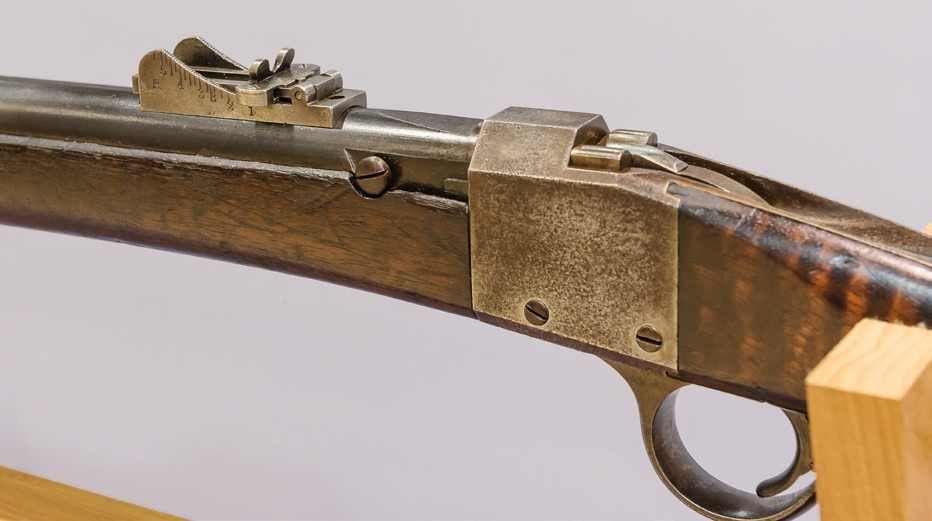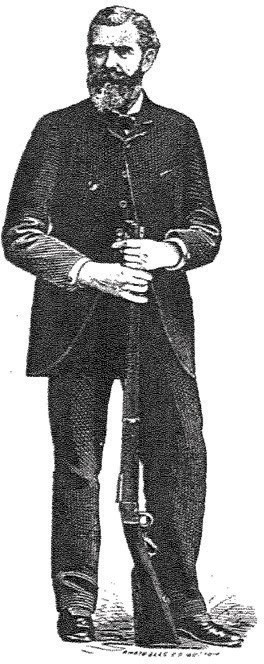The National Rifle Association
The National Rifle Association was formed in 1871 in New York City. In 1872, the NRA induced the New York Legislature to appropriate $25,000 for the purchase of a range near New York City, and the NRA agreed to raise $5,000 towards the effort. A plot was purchased near a railroad on Long Island. It was then deeded to the NRA in July of 1872. The Creedmoor Range and the early success of the Americans in the international match of 1874, created a foundation for the NRA which allowed it to grow. The land had been the Creed family farm, and Col. Henry Shaw, a member of the Range Committee of the NRA, upon seeing the desolate land was inspired to call it “Creed- moor.” Creedmoor opened in the spring of 1873, with the first match being held June 21, 1873, and it was used primarily by National Guardsmen and mostly at short ranges.
Other states started to show an interest in joining the NRA to use the range as well. An offshoot of the NRA, the “Amateur Club of New York City” was formed to cultivate use of the sporting rifle and to develop marksmanship as an amusement, with no ulterior military purpose. Many men joined who would have never been involved in a military regiment.

The J.H. Brown Rifle
Creedmore 1874
In the winter of 1873 the Irish, winners of the Elcho Shield at Wimbledon that year, issued a challenge to the Americans to decide the “Championship of the World”. The Irish would use Rigby muzzle-loaders and the Americans would have to use rifles of American manufacture. The challenge was accepted by the Amateur Club and shot at Creedmoor in 1874, before an audience of 5,000. The Irish club had thousands of members, many of whom had long experience in shooting in international long- range competition. The Amateur Club had 67 members only a few of whom had ever competed past 500 yards. This competition was definitely the professionals versus the amateurs. The match was conducted at 800, 900 and 1,000 yards. In 1874 the American’s won the match on the last shot by Colonel Bodine at 1,000 yards. The Americans shot Remington Rolling Blocks and Sharps rifles in long-range configurations.
On January 12, 1875, Colonel Church, the retiring president of the NRA, in addressing the annual meeting stated:
“We have not only successfully inaugurated rifle practice in this country, but in connection with one of our subsidiary organizations, the Amateur Rifle Club, we have established for the National Rifle Association a record so brilliant that the name of Creedmoor has become a synonym the world over . . . for the highest skill in marksmanship yet attained.”
The fact that 132 years later, in 2007, Hornady in developing its now very popular 6.5mm cartridge chose the name “6.5 Creedmoor” proves Col. Church’s declaration true.

Creedmore 1877
History of Matches
In 1875 after the Americans won the International Match at Ireland’s Dollymount range, using Remington Rifles, the American team requested to compete in the premier match in England, the Elcho Shield Match. The donator of the Elcho Shield had restricted the match to England and Scotland, and later Ireland by special dispensation. The British stuck to this restriction, but created the Wimbledon cup for the Americans to compete for. The Wimbledon cup is still the premier long-range award for American shooting.
In 1876 The National Rifle Association amended its charter to include in its name “of America” and invited all nations to a rifle match that became known as the Centennial match. The trophy created was the Palma Trophy. The Americans hosted a match at Creedmoor in which the Scottish National Rifle Club, the Irish Rifle Association and teams from Canada and Australia competed. The Americans won this match. In 1877 another two-day international match was held at Creedmoor against a British team. There was so much interest in this match that live coverage was being cabled across the Atlantic. All of the Americans shot in the back position, some of the English fired from the prone position. The Americans used Remington and Sharpe’s rifles, the English used muzzle loaders.
In 1878 an invitation was extended by the Americans, but the British team did not accept. In 1879 an invitation was made by the Americans for a military rifle shoot, this was not accepted either. In 1880 Mr. F. Hyde brought an unsanctioned American team to Wimbledon to shoot. The British won 1,647 points to 1,568. An invitation was sent to the American National Rifle Association by the British National Rifle Association to shoot a match in 1881 in England, but it was refused. In 1881 the American National Rifle Association sent a challenge for a match upon different conditions as to distances and rifles. The match in 1882 was won by a team of British Volunteers against a team of National Guard of the United States at ranges of 200, 500, 600 yards the first day and 800, 900 and 1,000 the second day at Creedmoor. The British used 10 Metford rifles and 2 Webley-Wyley rifles. The Americans used 9 Remington rifles, 2 Sharps rifles and 1 Hotchkiss rifle. In 1883 a return match was shot at Wimbledon. In this match 7 Americans used the Brown rifle and 5 used Remingtons. In 1886 the Americans sent a challenge, but it was declined. Interest in long range shooting died out in the United States at this time and the matches were discontinued.

US Team 1833
J. H. Brown
J. H. Brown developed a rifle in response to the Americans losing the 1882 international match to the British, and to be a superior long-range rifle in military configuration. Between 16 to 20 of these rifles were made. Brown was a competitive shooter of note and at the time of developing this rifle, a National Rifle Association director. Brown was also a member of the 1883 team. Two rifles were approved by the NRA for the team in 1883, the Brown Rifle and the Remington Hepburn long range in military configuration.
Because of the disappointing results of the 1882 match, Remington designed a new rifle based upon the Hepburn action in 45 caliber. Remington improved the bar-rel by deepening the groves and narrowing the lands. John Bodine and Thomas J. Dolan, members of the 1882, team spent several weeks at the Remington factory experimenting to determine the most reliable load.
The Brown rifle was developed with an 8 groove bore chambered in 45-100 2.6”, shooting a 550-grain bullet. The bullet was designed by H. F. Clark in conjunction with the rifle. The Clark bullet was paper patched and then swaged to size. In one test target, Brown shot a 10-shot group at 200 yards that he could cover with his watch. Seven team members chose the Brown rifle, 5 choose the Remington for the 1883 match. Also of note, previously Brown had been a manufacturer of the Ballard rifle 1869-73, before production was assumed by Marlin.
Public interest waned in the long-range matches during the 1880s and Creedmoor was deeded back to the State of New York in 1890. The range continued to operate until 1910. In 1912, the Creedmoor State Hospital opened the Farm Colony of Brooklyn State Hospital with 32 patients. Today it is the site of the Creedmoor Psychiatric Center occupying 300 acres in Queens, New York.

550 Grain bullet designed by HF Clark

J.H. Brown


